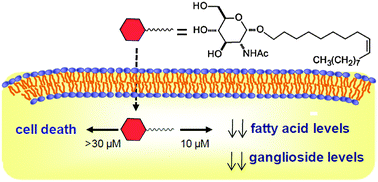Abstract

* Corresponding authors
a
Instituto de Química Orgánica General, CSIC, Juan de la Cierva, 3, 28006 Madrid, Spain
E-mail:
mayoralas@iqog.csic.es
Fax: +34 91 564 48 53
b
RUBAM Institut de Química Avançada de Catalunya, CSIC, Jordi Girona, 18, 08034 Barcelona, Spain
E-mail:
jcbqob@iiqab.csic.es
Fax: +34 93 204 59 04
c Hospital Nacional de Parapléjicos, SESCAM, Finca la Peraleda s/n, 45071 Toledo, Spain
d Instituto Cajal, CSIC, Avda., Doctor Arce 37, 28002 Madrid, Spain

 Please wait while we load your content...
Something went wrong. Try again?
Please wait while we load your content...
Something went wrong. Try again?
I. García-Álvarez, M. Egido-Gabás, L. Romero-Ramírez, E. Doncel-Pérez, M. Nieto-Sampedro, J. Casas and A. Fernández-Mayoralas, Mol. BioSyst., 2011, 7, 129 DOI: 10.1039/C0MB00125B
To request permission to reproduce material from this article, please go to the Copyright Clearance Center request page.
If you are an author contributing to an RSC publication, you do not need to request permission provided correct acknowledgement is given.
If you are the author of this article, you do not need to request permission to reproduce figures and diagrams provided correct acknowledgement is given. If you want to reproduce the whole article in a third-party publication (excluding your thesis/dissertation for which permission is not required) please go to the Copyright Clearance Center request page.
Read more about how to correctly acknowledge RSC content.
 Fetching data from CrossRef.
Fetching data from CrossRef.
This may take some time to load.
Loading related content
